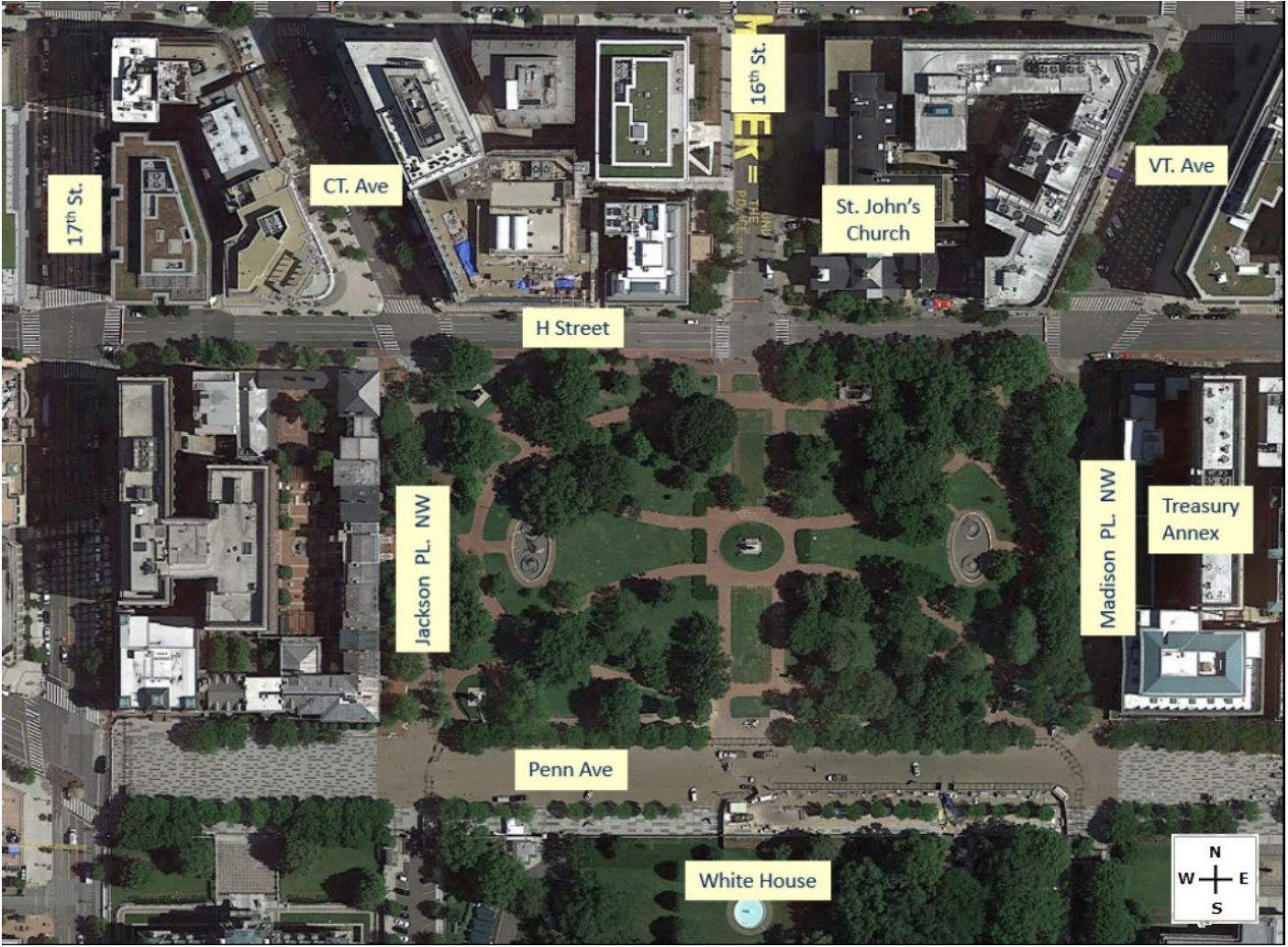WASHINGTON (CN) — An inspector general for the Interior Department appointed to his position by former President Donald Trump issued a report Wednesday that exonerates Trump in connection to the use of chemical weapons at a protest last year.
It is undisputed that Trump marched through the park known as Lafayette Square on June 1, shortly after authorities cleared the protesters who had been peacefully demonstrating there. Days earlier, George Floyd had been murdered by a Minneapolis police officer, and Washington was one of countless cities around the world overtaken by protesters in the aftermath. On June 1, standing outside a historic church separated from the White House by Lafayette Square, Trump posed for photos with a Bible as members of his family and his Cabinet looked on.
What the report Wednesday from Inspector General Mark Greenblatt concludes, however, is that federal police forcibly cleared the area of protesters not for Trump's photo op but so that a contractor could install an "antiscale fence" that protesters would be unable to breach.
“The evidence we reviewed showed that the USPP cleared the park to allow the contractor to safely install the antiscale fencing in response to destruction of property and injury to officers occurring on May 30 and 31," the 41-page report states. "Further, the evidence showed that the USPP [U.S. Park Police] did not know about the president’s potential movement until mid- to late afternoon on June 1 — hours after it had begun developing its operational plan and the fencing contractor had arrived in the park.”
Trump headed off for the photo op at St. John’s Church shortly after delivering remarks at 7 p.m. — the curfew installed for D.C. by Mayor Muriel Bowser a day earlier. There, the president delivered a thundering warning: Further unrest would prompt him to deploy the U.S. military to any city or state that “refused to take the actions necessary” to quell protests.
With typical bombast, Trump promised that the National Guard would be called upon to “dominate the streets” and that military forces would “quickly solve the problem” posed by protesters if state governors could not.
While Trump was speaking, however, police were already on horseback in riot gear and wielding clubs in Lafayette Square. Police had already begun moving people violently deploying flash bangs, smoke bombs and pepper balls.

But the report from Greenblatt says U.S. Park Police had gotten the orders to clear the square for curfew long before anyone knew that Trump planned to give a speech and take photos.
Indeed, Metropolitan Police asked Parks Police to delay their sweep of the square so there would be “clear authority to arrest protesters who failed to comply with the curfew.”
Video of the protest's dismantling shows individuals hurling water bottles at police who descended on them. Park Police contend protesters not only threw water bottles but bricks and caustic liquids. A Washington Post review of video footage from June 1 indicates no evidence of either bricks or caustic liquids used by protesters during the fray. In his report Wednesday, Greenblatt reported water bottles and eggs were thrown by protesters at police on June 1.
Noxious fumes still hung in the air from pepper spray unleashed by police when Trump, his attorney general and others walked the short distance from the White House to St. John’s Episcopal Church. The procession lasted just 20 minutes.
Video shot by CNN shows then-Attorney General William Barr entering Lafayette Park around 6:10 p.m. Standing behind a group of police in riot gear, he then speaks with a small group of officials including Secret Service and a representative from the U.S. Park Police while gesturing toward St. John’s Church. The Washington Post obtained a radio transmission from June 1 confirming at 6:21 p.m., law enforcement did inquire to each other over which available officers would carry pepper balls as they cleared the square.










